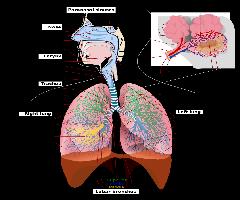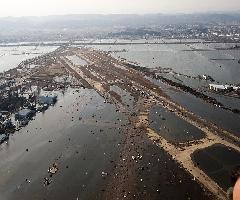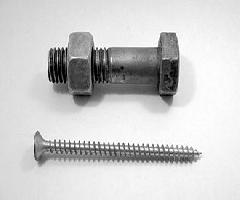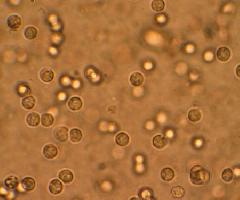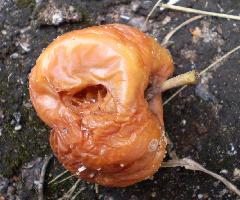Nutrient cycle is the process by which nutrients are continuously passed on between the nonliving environment and living things.
All living things need food. Plants that produce the food which people and animals eat also need food. To make the food they need, plants get some chemical nutrients from the nonliving environment.
Although there are so many plants and these plants make food continuously, the nutrients that they get from nonliving environment are never used up. Why?
Plants make food using nutrients from soil, water and air. Examples of these nutrients are mineral such as phosphorus and nitrogen (in the form of nitrates,
which is a nitrogen compound) that come from soil, and carbon dioxide which comes from the air. These nutrients are called inorganic nutrients because they come from nonliving things.Plants absorb water and minerals from the soil through their roots. They get carbon dioxide from the air through their leaves. Using the sun’s energy, plants use water and carbon dioxide during the process of food making.
Some of the food produced by plants are carbohydrates (which contain carbon), and proteins which contain nitrogen). Carbohydrates and proteins are examples of organic compounds. Living things produce organic compounds.
Nutrients alternate between their inorganic forms in the environment and their organic forms in living things. Eventually, people and animals die. Bacteria, fungi and worms feed on the remains of dead organisms. As they do so, they break the organic compounds and release the nutrients back to the air and the soil.
The inorganic nutrients will again be used by plants to make food. The process by which nutrients pass from the nonliving environment to the living world and back continuously is known as nutrient cycle.
Decomposers are an important
part of the nutrient cycle. Through them, nutrients in the ecosystem can be used again and again. In this way, nutrient cycles go on and on.Take for example the nutrient carbon. The inorganic form of carbon is carbon dioxide. Carbon dioxide is taken in by plants from the air. Plants use carbon to make carbohydrates. When people and animals eat plants, the carbon becomes part of their bodies. When living things die, their bodies are attacked by decomposers. One of the products of decomposition is carbon dioxide. Once release from decaying flesh, this gas can be used again for food making, and the cycle is repeated.
Another example is nitrogen. Although this element is the major component of air, it cannot be used by living things. But a few microorganisms such as a certain blue-green algae and bacteria can change nitrogen into compounds called nitrates. Plants take in nitrates to make proteins and some other substances. When living things eat plants, the nitrogen becomes part of their bodies. When they die, decomposers attack their flesh. Proteins are converted to simpler nitrogen compounds. Eventually, nitrogen is returned to the environment. Another cycle is about to begin. Other nutrients are also recycled through the action of decomposers.
If you find this article interesting, you might also want to read these:
http://expertscolumn.com/content/conservation-natural-resources
http://expertscolumn.com/content/effects-water-pollution
http://expertscolumn.com/content/recognizing-causes-climate
